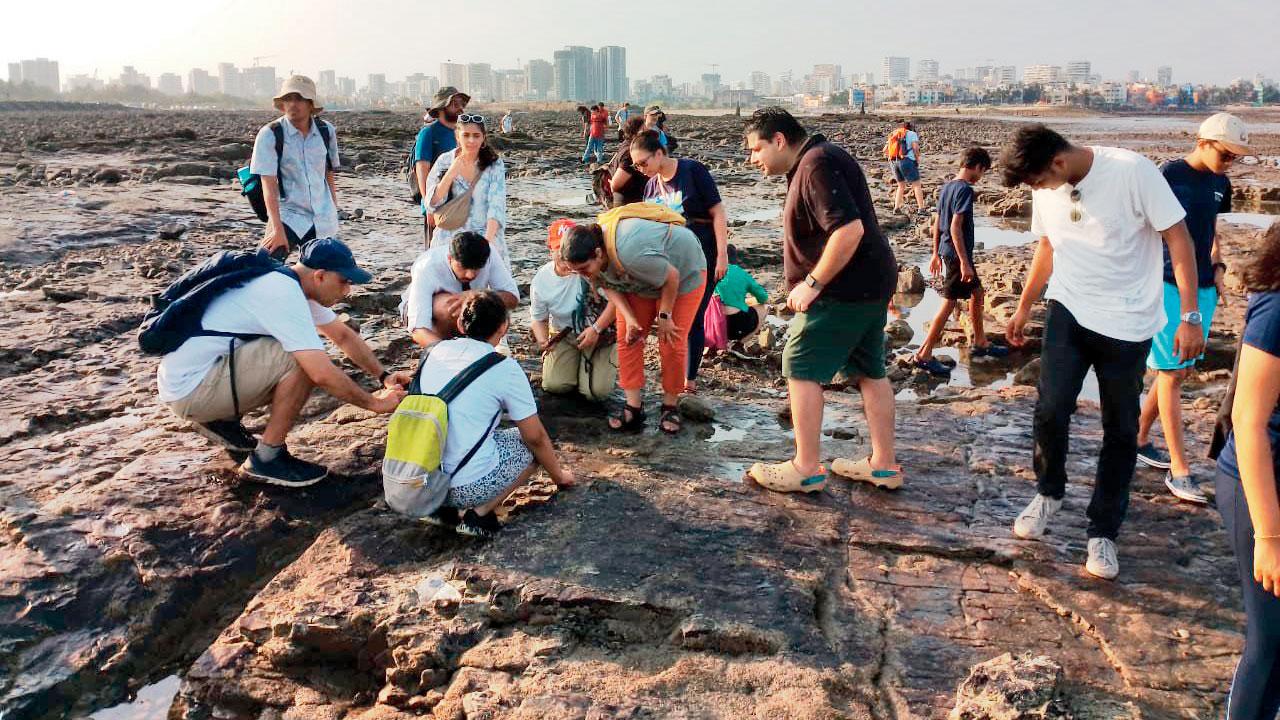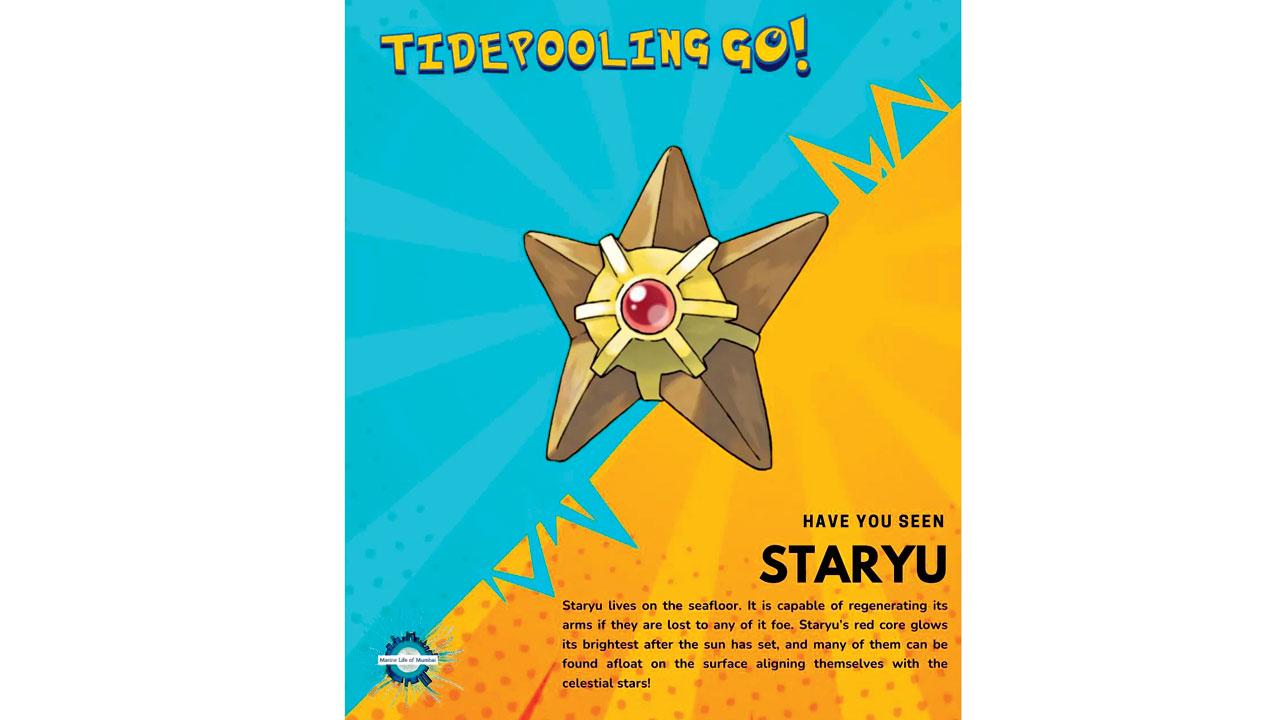Marine conservationists from the city are putting the spotlight on the diverse fauna in Mumbai’s intertidal zones with a Pokémon-themed social media campaign

The first post of the series features Krabby. Pic Courtesy/Instagram (right) A maroon stone crab
Somewhere on the shorelines of Mumbai, a crab lives under a rock. If you flip the rock to steal a glimpse, it tucks its arms inside and imitates a rock. While we would have preferred Abra-crab-dab-ra, experts choose to call it the maroon stone crab. This writer knows this because they’ve just returned from a marine life exploration… on Instagram.
Tidepooling GO is a series of posts that takes users on a Pokémon-themed exploration of the thriving marine life in Mumbai’s intertidal zones using references to the familiar pocket monsters. The sneaky crab, for instance, finds a partner in Krabby, the notorious crab from the Japanese series.

Bombay dorid, a species of sea slugs (right) porpita porpita or blue dollar
“It came almost naturally. Drawing parallels between the two was easy because many of the first-generation Pokémon were actually inspired by real-life creatures. As the monsoon settles in where heading out on shore walks becomes difficult, we wanted to use this to our advantage to educate people using a familiar point of reference,” reveals Shaunak Modi, core team member. All through monsoon, the community will post one Pokémon at a time on their page, with a 24-hour window for viewers to guess what creature from the tide pools of Mumbai it resembles.

Participants examine a tide pool at a previous shorewalk
Sounds fun. But what is a tide pool anyway? Modi explains, “In periods of low tide, small pools reveal themselves closer to the sea. These are anywhere between 20 cm to six feet deep, and house a diverse ecosystem.” From two-cm-long snails, to hydroids that imitate a plant to survive, these pools are home to many such fascinating creatures. “These tide pools span the entire coastline of the country. But for enthusiasts who live in landlocked cities and states, we have always wanted to share the experience virtually,” he adds.

The latest clue features Staryu
With the first post featuring Krabby already garnering participation from enthusiasts around the globe, Raniya Ansari, educator, and the creative brain behind the idea, warns us that things will soon get harder. “We started with relatively easy ones to set the tone. We already have a list of Pokémon including Tentacool and Mareanie that we have curated with the team; they are ready to go,” she shares excitedly.

Shaunak Modi
What’s more, we learn that the popular classification of Pokémon as rare, uncommon, and common might find a reflection in tide pool explorations as well. “The more common sightings include sessile [immobile] animals like the sea anemone, and other sea snails and common crabs. On the other hand, animals like sea slugs of the Cratena variety that feed on hydroids, and corals, which can only be seen during extremely low tides remain uncommon sightings. As of now, none of them are rare,” Modi reveals.
The 40-year-old worries things might change. “With the changing tides, these animals have evolved to survive both underwater and exposed to air. The goby fish, for instance, can survive without water for a few hours. If the oceans were to recede, it will directly affect these intricate life forms,” he sighs. For now, the community is sifting through responses that are pouring in for their next clue — the water-type first generation Pokémon, Staryu, known for its regeneration powers and laidback demeanour. Time to put your thinking caps on.
Log on to: @marinelifeofmumbai on Instagram
 Subscribe today by clicking the link and stay updated with the latest news!" Click here!
Subscribe today by clicking the link and stay updated with the latest news!" Click here!










